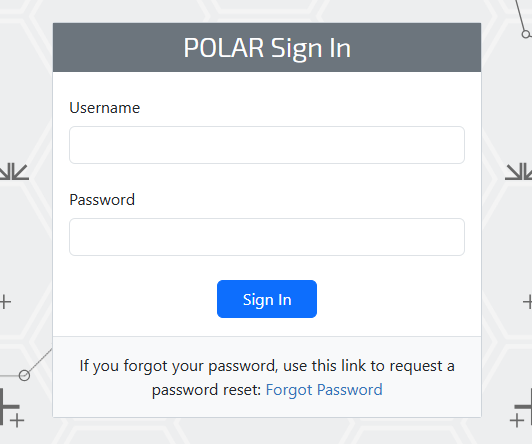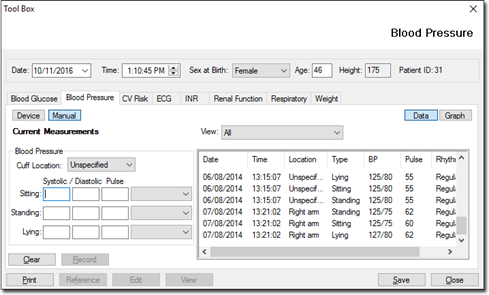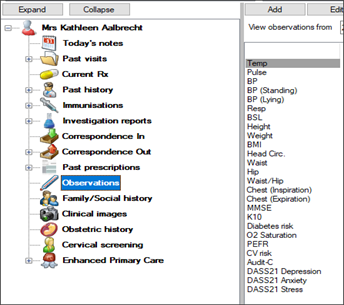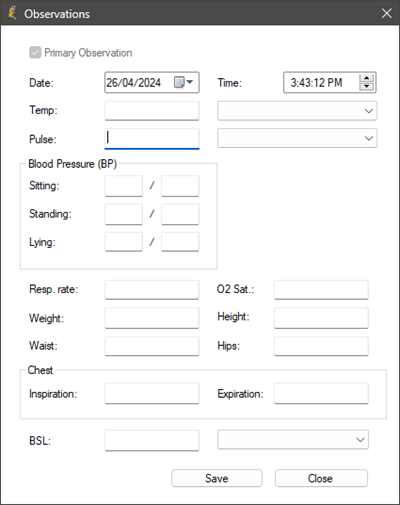Resource Hub: Secondary prevention of cardiovascular disease (CVD)
This hub provides practical, evidence-based resources to support GPs participating in EMPHN’s Clinical Insights secondary prevention of CVD pilot program.
The program is based on the Australian and New Zealand Living Clinical Guidelines for Stroke Management: Secondary prevention (2024).
Additional resources to support decision-making and patient care are available below.
On this page:
Data sources and definitions
| Data sources |
|---|
| Data in this report are based on what is recorded in the designated fields in the clinical software at your practice and uploaded to POLAR. POLAR is unable to extract data from progress notes. |
| POLAR can only capture Blood Pressure (BP) that is recorded in the measurement field of your clinical software. |
| Term | Definition |
|---|---|
| RACGP active patients | Patients who have attended the practice 3 or more times in the past 2 years. |
| Patient allocation to GP | A patient is allocated to the GP who has the highest number of the patients’ records in the last 2 years (i.e. at least >50% of the time). If a patient doesn’t see any GP for >50% of the time, they will be allocated to the GP they last saw. |
| Conditions included and excluded Medications included | Conditions included Ischaemic stroke TIA Atrial fibrillation (concurrent) Conditions excluded Patients with concurrent haemorrhagic stroke have been excluded in the report. Medications included Antihypertensives Antiplatelets* Oral anticoagulants Statins, especially high potency statins *Data in the report is based on the current medication list. To improve accuracy for continuity of care, it’s recommended to include over-the-counter (OTC) medications such as aspirin on the list. Find a comprehensive list of conditions and medications here. |
Resources
How this information can be used to improve patient care
Accessing patient data: To view the list of patients, click on the link in your Clinical Insights report ‘Visit POLAR here’.
The link will take you to a live report in POLAR Explorer where you can see a list of your re-identified patients. View example of patient list.
If you’re not already logged in to POLAR Explorer, when you click on the link you’ll need to LOG IN first and validate your email address and mobile number before being redirected to your patient list. View various POLAR walkthrough step-by-step guides designed to help you navigate POLAR.
Your clinical software provider can provide support with recalling patients via your clinical software.
Recalling patients: Consider which patients on the list should be reviewed. View the below text/email template to support you with patient recalls.
Email template to recall patients eligible for Secondary CVD Prevention after Ischaemic Stroke or TIA:
Subject: Book Your Heart Review
Dear [Patient First Name],
Looking after your heart health is one of the best ways to reduce the risk of strokes or mini-strokes. That’s why we’re inviting you to book in a review with your GP to review your medications and provide some lifestyle advice.
This appointment will help us make sure everything’s on track and gives you a chance to ask any questions.
You can book online at [Booking Link] or call us on [Clinic Phone Number].
If you have any questions or need assistance, please don’t hesitate to contact us.
Kind regards,
[Your Clinic Name]
Chronic Condition Management Plan: Some patients may be eligible for a GP Chronic Condition Management Plan. Guidance and templates for Chronic Conditions Management Plan is available via Services Australia: GP chronic condition management plan – Health professionals – Services Australia
Latest news as of 1 July 2025 for Chronic Conditions Management Plan items can be found via the following news article: New GP Chronic Conditions Management Framework and MBS Items in effect from 1 July 2025 – EMPHN
Understanding and navigating POLAR
How to log onto POLAR:
- Go to: polarexplorer.org.au/login

- Note if you do not have a user login set up contact your POLAR administration or digitalhealth@emphn.org.au.
- The first time you login you will be asked to validate your details with a code that will be sent to your email address and mobile phone number.
Health professional resources
HealthPathways Melbourne
HealthPathways Melbourne is a clinical management and referral resource designed for use during consultations. It gives clinicians a single website to access clinical referral pathways and resources.
Consumer resources
EnableMe from the Stroke Foundation contains information for consumers about how to live well after a stroke.
Highlighted resource from the website: Medicine after stroke or TIA fact sheet educates consumers about recommended medications and the importance of preventive treatment.
StrokeLine’s health professionals provide information and advice on stroke prevention, treatment and recovery. They provide support and services for stroke survivors, carers or family members.
How to improve accuracy of reports
Data are only extracted from designated fields within the clinical software—not free text progress notes. Using standard codes can improve data quality and report accuracy.
Blood pressure can be captured if it is recorded in the below shown locations in the respective clinical softwares.
Medical Director:
- From within the Clinical Window, select Tools > Tool Box > Blood Pressure. The Blood Pressure tab appears.
- Enter values manually or via a device.

Best Practice:
- From the patient record, select Observations from the tree on the left-hand side.

- Click Add in the top-left corner of the observations screen. The Observations screen will appear.

Continuing Professional Development (CPD)
Time spent reviewing the secondary prevention of cardiovascular disease report, conducting a mini-audit of 10 patients, and exploring improvement opportunities will contribute towards 12 (6 MO, 5RP and 1EA) CPD hours.
Frequently Asked Questions (FAQs)
- How does this report benefit me and my patients?
The report provides actionable insights based on your practice data, helping you identify patients with CVD after Ischaemic Stroke or TIA who may benefit from optimising management. - How did we access the data?
Your practice owner has provided consent for data sharing as part of the Clinical Insights program. Data is securely extracted through POLAR and used solely for quality improvement purposes. - Is my data secure and private?
Yes. All data is handled in accordance with strict privacy and following our protocols. Only de-identified or practice-approved data is used for reporting, and it is never shared externally without consent. - How can I access further support/assistance with POLAR?
Email digitalhealth@emphn.org.au for further support, and they will direct you to access the Digital Remote support via teamviewer.